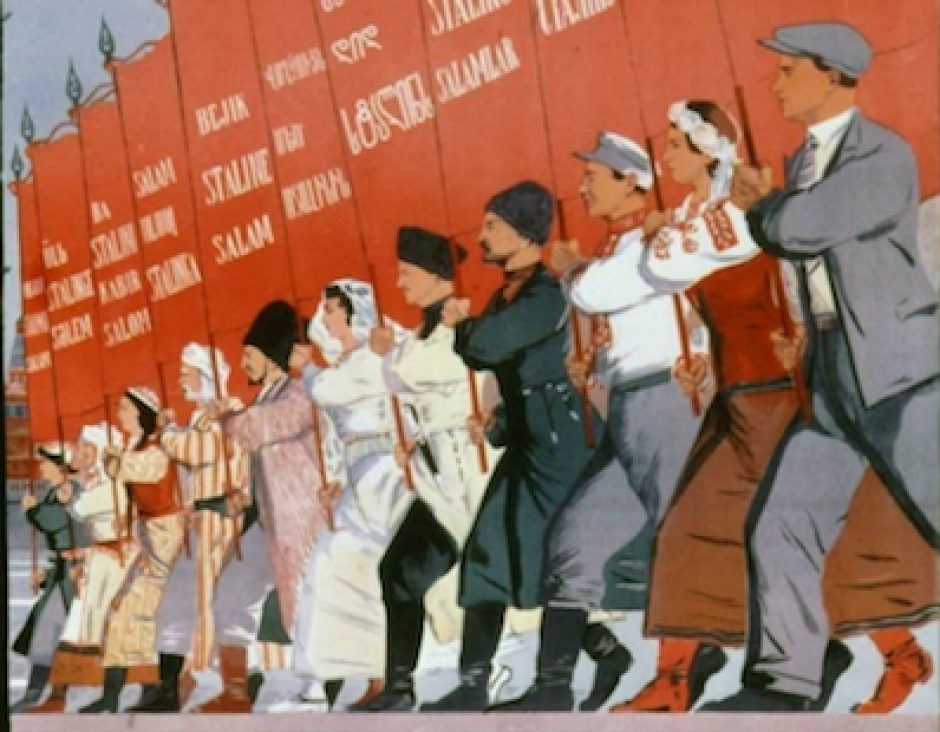I’ve been enjoying A Biography of No Place so far. The hybrid writing style of a fairly standard historical voice with a more personal voice still seems to me to be pretty captivating. However, I also noticed a couple of points made in these chapters that didn’t seem well supported and I would be interested to know if you all agree.
I’ll cover two points that I think were poorly supported in the text or don’t fit into the overall narrative the Brown is writing, and bear with me because it might be a bit nitpicky. They are both in the section in which Brown covers the peasant rebellions in the Kresy, Brown writes “They fought with fists, stones, pitchforks, and shovels in part because that is all they had, but also because they knew they would not be considered counterrevolutionaries for throwing stones” (Brown, 104). Brown fails to mention what they wrote about only three pages prior, a case in which peasants chased a Soviet brigade onto a roof and attempt to set fire to the building (Brown, 101), this seems like exactly the kind of behavior that the Soviet government would have seen as counterrevolutionary. It also seems that if they had nothing else to fight with it seems irrelevant whether they thought they would be considered counter revolutionaries for their rebellion. It also seems that in the long term this was not an effective strategy as on March 5th “the Politburo issued a special directive to cleanse the border zone of any suspicious persons from any social class” (Brown, 106). To me this seemed like a case of Brown attributing “peasant guile” (Brown, 106) to the peasants, which I read as a sort of mystification of the peasants rather than recognizing them as historical actors working within material bounds. I could be completely wrong though and I think that this could make for some good discussion.
The second point also deals with the peasant rebellions. Brown writes “Instead of archaism, rebellious border dwellers used their new identities as “national minorities” and their position on the recently forged frontier in the midst of the international tensions to wage war against the Soviet state” (Brown, 105). My only problem with this is that Brown at no point demonstrates that the peasants are mobilizing their “national minority” identities for this rebellion, at least as far as I could tell. Brown does show how religion was used to motivate the peasants to fight in the rebellion, specifically the evangelical-sectarian movement (Brown, 105-6).
The last topic I’m going to touch on is the categorization of people and territory according to nationality (Brown, 147). Brown writes how the categorization of people and land by nationality reinforced the state’s belief in those nationalities and the rebellion of the people in those territories reinforced the state’s belief in the danger posed by some of those nationalities (Brown, 148). This is interesting because these nationalities were defined by the Soviet government and were imposed on people who didn’t necessarily feel any connection to these identities, as Brown writes “For a decade party leaders had tried to convince people to live within their designated national boundaries. They mandated that Jews study in Yiddish schools because they were Jews. They forbade Poles from speaking Ukrainian in their village council meetings and fired Ukrainian officials who had not mastered Ukrainian.” (Brown, 149). I guess my question is, how could they have done this better? Or maybe where did things go wrong? Was the entire project of creating nations within a multi-ethnic state a mistake from the beginning, or was there a way that this project could have been carried out which you think might have worked better?

Page 104 struck me as particularly weird also. She spends a while talking about all of the counterrevolutionary actions the peasants engaged in like destroying machinery and burning records, and then follows that up by saying they threw rocks because throwing rocks wouldn’t be seen as counterrevolutionary. It’s possible that she’s talking about two different groups of peasants, but if that’s the case she doesn’t make that very clear. And furthermore, within the context of all of the other counterrevolutionary actions that were going on why WOULDN’T the Soviets see throwing rocks as counterrevolutionary? She makes it sound like it was just one of a number of varyingly extreme actions that all had the same end goal so I don’t really understand what makes the rock throwing different.